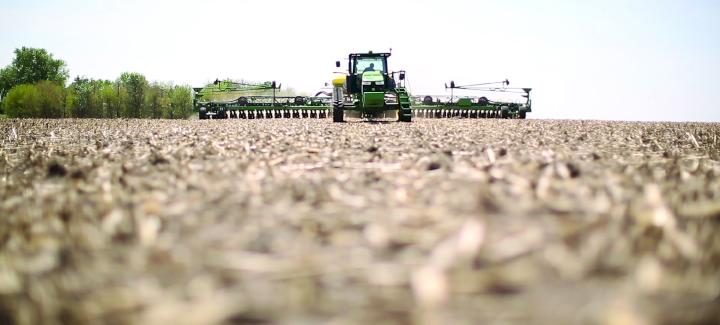Spring may not be in the air quite yet for most parts of the Corn Belt and the northern United States, but it’s never too early to get your equipment ready for planting. Whether you’re hitting the field in a till or no-till situation, it’s always best practice to check your equipment to ensure a smooth and efficient planting season. Here are our favorite planting prep tips to get you started.
- Check equipment manuals. It’s always a good idea to brush up on the ins and outs of properly operating and maintaining your equipment. Dust off your equipment manuals and reread whatever is necessary before performing your pre-planting equipment check so that no component goes overlooked.
- Check tires. A quick walk around the equipment can help you spot signs of wear and tear on tractor and planter tires. Make sure all tires have adequate pressure before hitting the field. And growers especially need to pay close attention to their gauge wheels on the planter to ensure the row units will make proper contact with the ground. It’s also important to check closing and depth wheels.
- Check software. Equipment comes with a lot of different electronics nowadays, so checking to see if all computer systems are calibrated and software is operational is imperative before you hit the field. Precision software manages row spacing, planting population and seed depth, to name a few, so it must be properly calibrated to achieve proper seeding rates and seed-to-soil contact.
- Check chains and bearings. Chains and bearings may need lubrication so that they’re operating smoothly and not kinking. Kinking and friction could cause issues with the equipment’s functionality. Also, make sure that all chains and bearings are on tight.
- Check lights. Planting requires early mornings and late nights in the field. You, of course, want proper lighting so you can see your way in and out of the field, but it’s always important to have your lights in working order for others to see you. Check your regular headlights, taillights and hazards on all equipment you use for planting season.
- Check for proper seed-to-soil placement. This is a really important step for all growers. To ensure proper soil penetration and seed placement, growers need to not only check gauge wheels as previously mentioned, but they also need to check that wheels and cut blades are clean; disc blades are free of chips and cracks; and seed tubes, meter, and planter units are free of wear and tear. Not checking this equipment can lead to improper seed-to-soil contact and can lead to skips in the field or inaccurate seed depth. It’s also best practice to test the equipment beforehand to make sure it’s making proper seed furrows and that the machine will allow for proper singulation and spacing.
- Check hydraulics. Hydraulic hoses are exposed to various weather elements throughout the year, so it’s important to check that there aren’t any leaks or cracks. Make replacements and repairs where needed.
- Check cylinders. Cylinders are there to fold and unfold your planting equipment. These are extremely important as you hit the road to the field. You never know where you need to fold your equipment up to allow for passersby on the highway or fold them back down to pass under a power line. Test them a few times before you even hit the road!
- Remember safety first. Know the rules of moving equipment on public roads and around power lines. Remember to get enough sleep so that you’re alert and can avoid accidents. Employ a buddy system for moving equipment, and always have your phone on you in the event an incident should occur. Safety should always be a top priority during the busy planting season.
For more tips on equipment prep, contact your local Stine sales rep or regional sales agronomist. Here’s to a safe and successful planting season (when we’re ready for it)!

